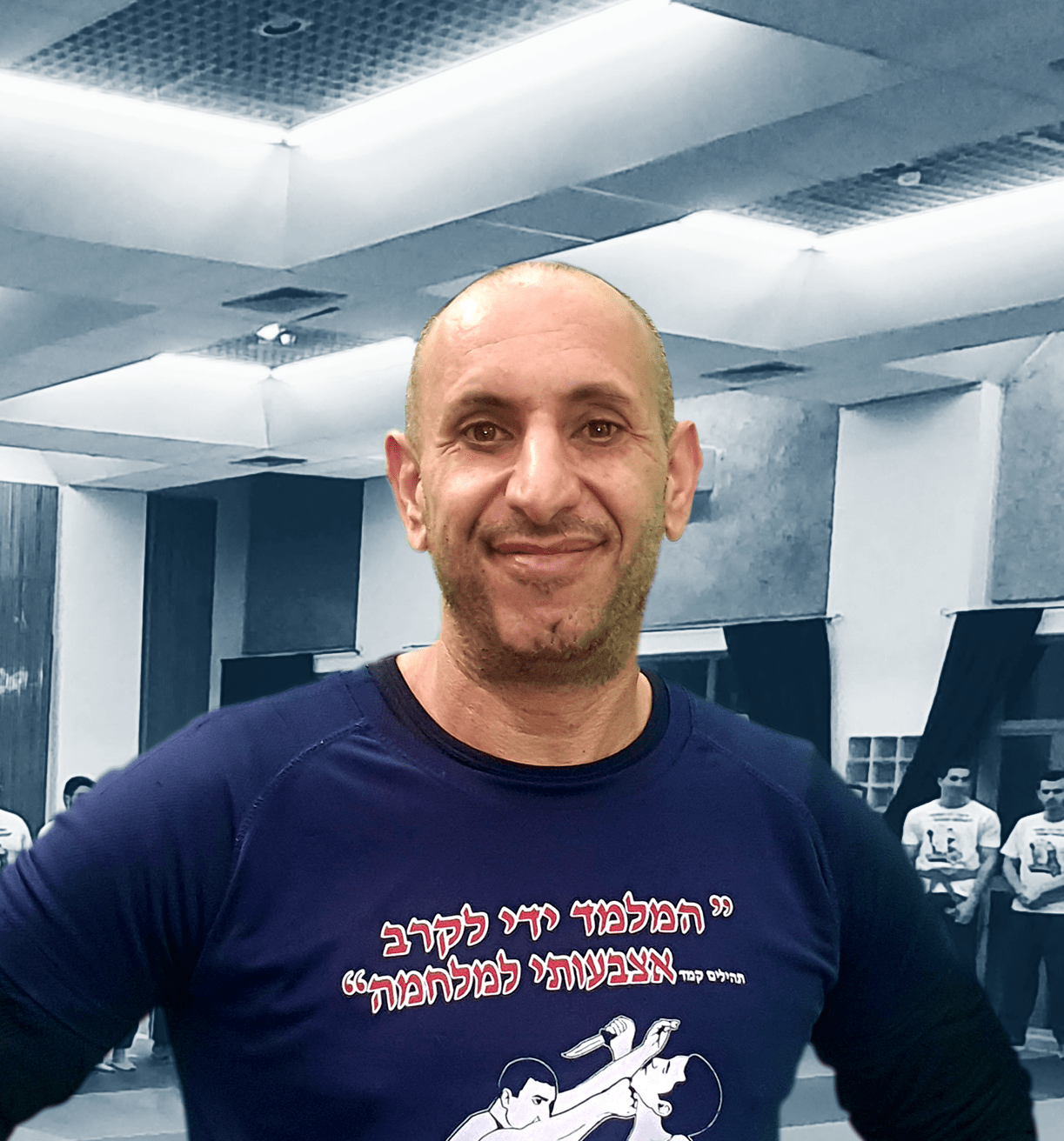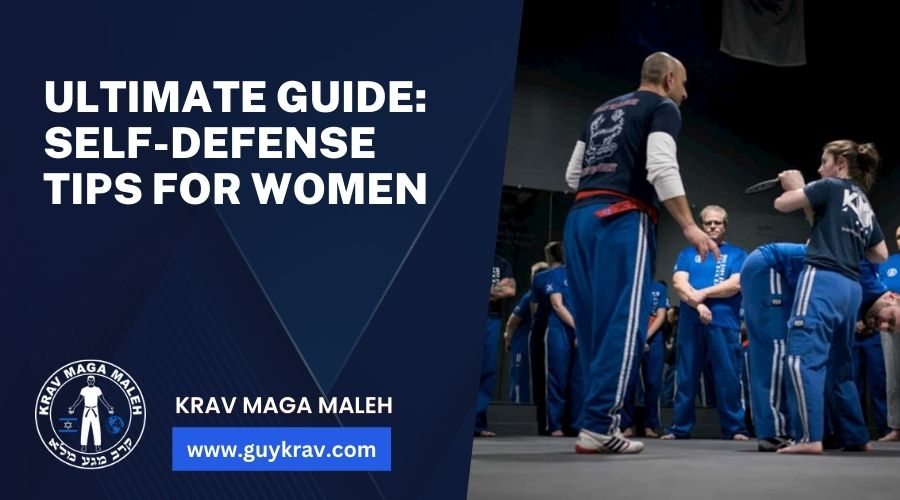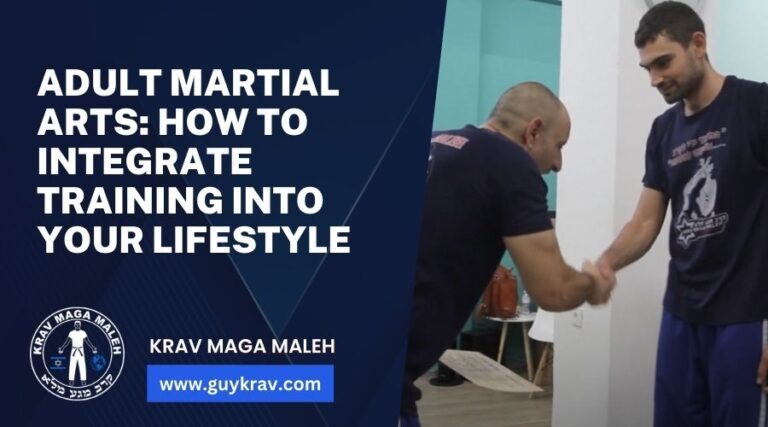Self-defense is a vital skill for every woman, empowering them to navigate various situations with confidence and awareness. At Krav Maga Maleh, we specialize in providing self-defense tips for women, tailored to meet the unique challenges they face in today’s world. Our approach is not just about physical techniques; it’s about building a mindset that prioritizes safety and self-assurance. This guide aims to equip women with practical, effective strategies to protect themselves, ensuring they feel secure and prepared in any circumstance.
In today’s society, the importance of self-defense for women cannot be overstated. With increasing awareness of personal safety, women are seeking ways to defend themselves and their loved ones. Krav Maga Maleh, located in Ramat Gan, Israel, understands these concerns. We offer comprehensive training that covers various aspects of self-defense, from physical maneuvers to psychological preparedness. Our goal is to empower women with the knowledge and skills they need to handle potential threats confidently.
Our training methodology at Krav Maga Maleh is centered around real-world scenarios, ensuring that our students are not just learning techniques but also understanding how to apply them effectively in different situations. We focus on creating a supportive, empowering environment where women can learn, practice, and master the art of self-defense. By the end of this guide, readers will have a deeper understanding of self-defense principles and practical tips they can apply in their daily lives, making them more confident and secure.
Understanding the Basics of Self-Defense
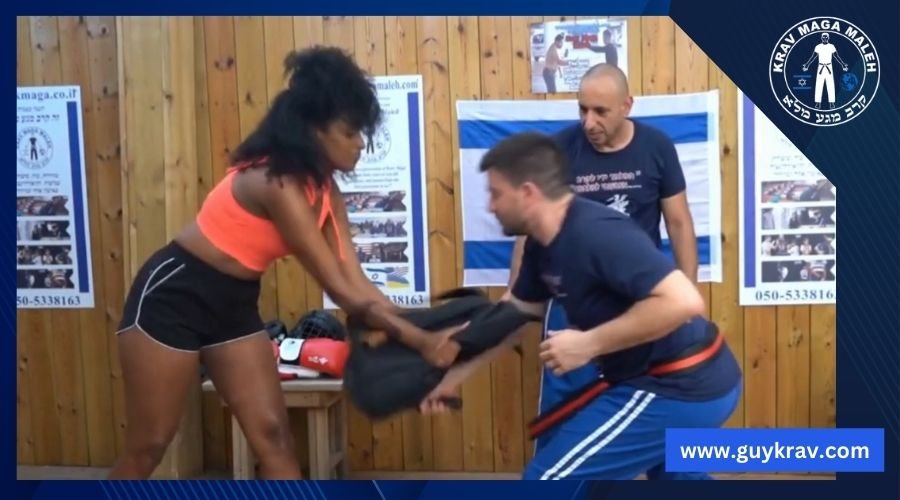
Self-defense is an essential skill set that goes beyond physical strength or fighting techniques. It encompasses a broad range of practices focused on keeping oneself safe from harm. For women, understanding these basics is not just about responding to physical threats but also about developing an awareness of their environment and learning how to prevent dangerous situations. This section delves into what self-defense means in a modern context and explores the core principles that make it effective.
Defining Self-Defense in the Modern World
In the modern world, self-defense is defined as the ability to protect oneself from physical harm, but it’s also about mental preparedness and situational awareness. It’s not just about reacting to an attack but also about recognizing and avoiding potential threats before they escalate. This modern interpretation of self-defense emphasizes the importance of being alert and aware in various environments, whether at home, on the street, or in public spaces. It’s about making smart choices that enhance personal safety and reduce the risk of confrontation.
Core Principles for Effective Self-Defense
The effectiveness of self-defense lies in its core principles: awareness, prevention, and assertiveness. Awareness involves understanding your surroundings and identifying potential threats. Prevention focuses on strategies to avoid dangerous situations, such as choosing safe routes or avoiding distractions while walking. Assertiveness is about confidently asserting your boundaries and using your voice as a tool for self-protection. These principles form the foundation of self-defense, guiding women on how to act in various scenarios and empowering them with the skills to protect themselves effectively.
Essential Self-Defense Techniques for Women
Self-defense techniques for women should be practical, straightforward, and effective, regardless of the individual’s size or strength. This section covers fundamental defensive moves that every woman can master, as well as how to adapt these techniques to various threat situations. These skills are crucial for empowering women to confidently handle potential dangers.
Fundamental Defensive Moves
Here are some key defensive moves that are essential for women:
- Palm Strike: Aimed at the attacker’s nose or chin for maximum impact.
- Groin Kick: Effective at incapacitating an assailant quickly.
- Hammer Fist: A powerful strike using the side of the fist, ideal for close-range defense.
- Elbow Strike: Useful when the attacker is at close quarters.
- Knee to the Groin: Effective in close encounters, especially if the attacker is holding you.
- Wrist Release: Techniques to break free from an attacker’s grip.
- Chokehold Escape: Strategies to free yourself from a frontal or rear chokehold.
- Bear Hug Defense: Methods to escape a bear hug from behind or in front.
Adapting Techniques to Different Threat Situations
Different situations call for different self-defense strategies. Here’s how to adapt:
Against an Unarmed Attacker:
- Use strikes like palm strikes or knee kicks.
- Aim for vulnerable areas: eyes, nose, throat, and groin.
In Close-Range Situations:
- Utilize elbow strikes and knee kicks.
- Practice quick wrist releases and chokehold escapes.
In Grab-and-Hold Scenarios:
- Employ bear hug defenses and ground escapes.
- Use leverage and body weight to break free.
When Facing Multiple Attackers:
- Prioritize escape routes.
- Use quick, disabling strikes to create an opportunity to flee.
Mental and Physical Preparation for Self-Defense
Preparing for self-defense involves more than just learning physical techniques; it requires a combination of mental readiness and physical conditioning. This section explores how to cultivate a self-defense mindset and the importance of physical fitness in enhancing your ability to defend yourself effectively.
Cultivating a Self-Defense Mindset
Developing a self-defense mindset is crucial for effective personal protection. This mindset involves:
- Situational Awareness: Constantly being aware of your surroundings and potential dangers.
- Confidence: Believing in your ability to defend yourself effectively.
- Calmness Under Pressure: Maintaining composure to make clear, rational decisions in stressful situations.
- Preparedness: Regularly practicing self-defense techniques and scenarios.
- Assertiveness: Being ready to communicate your boundaries assertively.
- Risk Assessment: Quickly evaluate situations to determine the best course of action, whether to escape, de-escalate, or defend.
Physical Conditioning and Self-Defense Skills
Physical fitness plays a vital role in self-defense, enhancing your ability to perform techniques effectively. Key aspects include:
- Strength Training: Building muscle strength to improve your power in strikes and defenses.
- Cardiovascular Fitness: Increasing stamina and endurance for potentially prolonged self-defense situations.
- Flexibility: Enhancing your range of motion to execute moves with greater ease.
- Balance and Coordination: Improving your ability to maintain stability and control during physical confrontations.
- Speed and Agility: Developing quick reflexes and the ability to move swiftly to avoid or counter attacks.
- Regular Practice: Consistently training in self-defense techniques to ensure readiness and muscle memory.
Self-Defense Strategies in Public Spaces
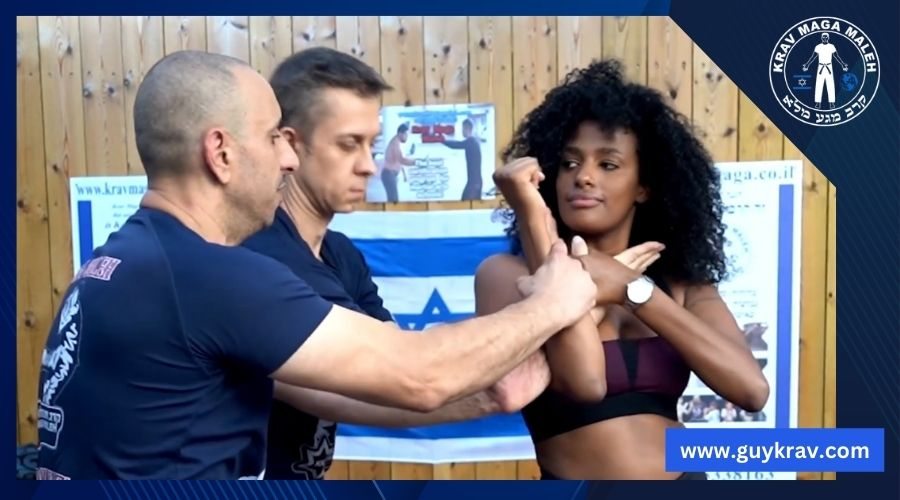
Navigating public spaces safely is a key aspect of self-defense, especially for women. This section focuses on practical strategies to enhance safety in public areas, including essential safety tips and situational awareness techniques that can help prevent dangerous situations.
Safety Tips for Public Areas
Staying safe in public requires vigilance and smart habits. Here are some essential tips:
- Stay in Well-Lit Areas: Avoid dark, isolated paths, and stick to well-lit, populated routes.
- Avoid Distractions: Stay off your phone and keep your attention on your surroundings.
- Trust Your Instincts: If something feels off, trust your gut and remove yourself from the situation.
- Plan Your Route: Know where you’re going and the safest way to get there.
- Keep Personal Items Secure: Carry bags close to your body and be mindful of your belongings.
- Use the Buddy System: Whenever possible, travel with a friend or in a group.
- Know Your Local Emergency Services: Be aware of how to contact help if needed.
Situational Awareness Techniques
Being aware of your surroundings is crucial for early threat detection. Here are techniques to enhance situational awareness:
- Regular Scanning: Periodically scan your environment, not just the people but also exits and potential hazards.
- Observe Body Language: Pay attention to the body language of those around you for signs of potential threat.
- Avoid Predictable Routines: Vary your routes and routines to reduce predictability.
- Stay Informed: Be aware of local news and updates that might affect your safety.
- Practice Mindfulness: Stay present and focused, which helps in noticing unusual activities.
- Learn to Identify Suspicious Behaviors: Understand common behaviors or signs that might indicate a threat.
- Engage Your Senses: Use all your senses to gather information about your environment.
Self-Defense at Home
Ensuring safety at home is as important as being vigilant in public spaces. This section covers strategies for securing your home environment and effectively using self-defense tools to enhance your safety and peace of mind.
Securing Your Home Environment
Creating a secure home environment involves several key steps:
- Sturdy Locks and Security Systems: Install strong locks on doors and windows, and consider a home security system or alarm.
- Good Lighting: Ensure both indoor and outdoor areas are well-lit, especially entry points.
- Secure Access Points: Regularly check and maintain the security of doors, windows, and any other potential entry points.
- Emergency Plan: Have a clear plan for emergencies, including safe rooms and escape routes.
- Stay Private: Be cautious about sharing personal information that could indicate when you’re home or away.
- Community Awareness: Get to know your neighbors and consider a neighborhood watch program for mutual safety.
Effective Use of Self-Defense Tools
In addition to physical techniques, certain tools can aid in self-defense at home:
- Pepper Spray: Keep it in an accessible place and know how to use it effectively.
- Personal Alarms: These can deter an attacker and alert others to your situation.
- Home Security Devices: Consider cameras, motion detectors, and smart locks for enhanced security.
- Self-Defense Weapons: If legal in your area, you might consider weapons like stun guns or tasers, but ensure you are trained and comfortable with their use.
- Everyday Objects: Learn how to use everyday household items as improvised self-defense tools.
- Regular Training: Practice using these tools so you’re prepared to use them effectively in an emergency.
Empowering Women through Self-Defense Training
Self-defense training is more than just learning how to fight; it’s a journey toward empowerment, confidence, and resilience. This section explores how self-defense empowers women and offers advice for those who may not be physically able to protect themselves.
The Empowerment Aspect of Self-Defense
Self-defense training empowers women in several ways:
- Boosts Confidence: Learning self-defense skills builds confidence in one’s ability to handle threatening situations.
- Enhances Awareness: Training increases awareness of one’s surroundings, making it easier to spot potential dangers.
- Develops Mental Strength: It fosters a mindset of resilience and determination.
- Promotes Physical Fitness: Regular training improves physical strength and agility, contributing to overall health.
- Encourages Assertiveness: Women learn to assertively communicate and set boundaries.
- Creates a Supportive Community: Joining self-defense classes connects women with others who share similar goals, fostering a sense of community.
How to Stay Safe if You Aren’t Physically Able to Protect Yourself
For those who may not be physically able to protect themselves, there are still effective strategies for ensuring safety:
- Use of Safety Tools: Carry and learn to use safety tools like alarms or pepper spray.
- Stay Informed: Keep up-to-date with local safety information and avoid high-risk areas.
- Develop Strong Communication Skills: Learn to assertively express yourself and de-escalate situations verbally.
- Leverage Technology: Use safety apps and devices that can alert authorities or loved ones in emergencies.
- Build a Support Network: Have a trusted group of friends or family you can reach out to for help.
- Plan Ahead: Always have a plan for how to respond in different scenarios, such as knowing the location of safe spaces when out in public.
Conclusion
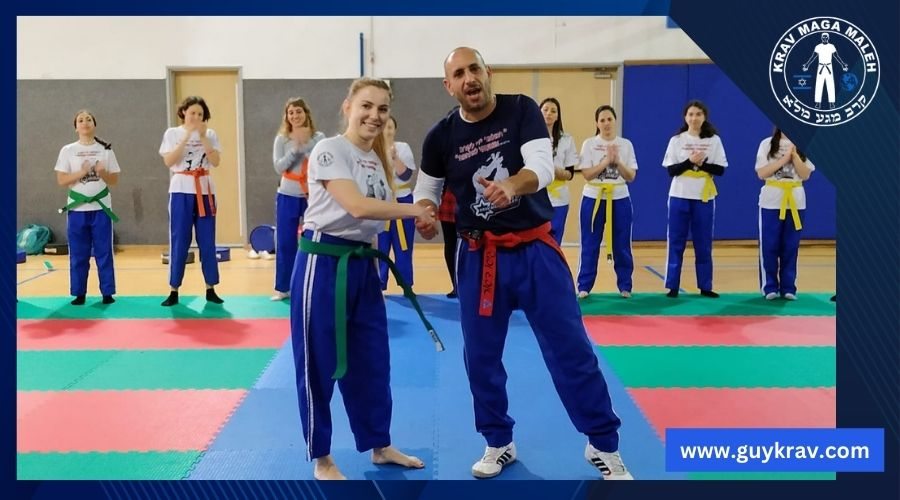
Throughout this guide, we’ve explored various aspects of self-defense, emphasizing its importance not just as a set of physical techniques but as a comprehensive approach to personal safety. We’ve delved into the basics of self-defense, highlighting the need for both mental and physical preparation. Fundamental defensive moves and strategies for adapting to different threat situations have been outlined, providing practical skills that can be applied in real-life scenarios. Additionally, we’ve discussed the significance of being vigilant in public spaces and the measures one can take to secure their home environment. Above all, the empowering nature of self-defense training has been a recurring theme, underscoring its role in boosting confidence, awareness, and overall well-being.
Frequently Asked Questions
What are the best self-defense techniques for someone with limited mobility?
For those with limited mobility, focusing on verbal de-escalation techniques and using accessible self-defense tools like alarms or pepper spray can be effective. It’s also important to practice awareness and strategic positioning in potentially risky situations.
How often should I practice self-defense techniques to stay proficient?
Regular practice is key. Ideally, practicing self-defense techniques once a week helps maintain proficiency. However, even bi-weekly or monthly sessions can be beneficial, especially if complemented by physical conditioning exercises.
Can self-defense training help in situations other than physical attacks?
Absolutely. Self-defense training enhances situational awareness, assertiveness, and decision-making skills, which are valuable in various scenarios, including de-escalating verbal confrontations or handling emergencies.
Is self-defense training suitable for all ages?
Yes, self-defense training can be adapted for all ages. Children, adults, and seniors can benefit from tailored programs that focus on age-appropriate techniques and strategies.
What should I look for in a good self-defense class?
Look for classes that offer a balanced approach, including physical techniques, situational awareness, and de-escalation strategies. A good class should also have experienced instructors, a safe training environment, and a curriculum that addresses real-life scenarios.
Take Control of Your Safety with Krav Maga Maleh
Take the first step towards empowering yourself with self-defense skills by joining Krav Maga Maleh in Ramat Gan, Israel. Contact us today to learn more and start your journey to personal safety and confidence.


